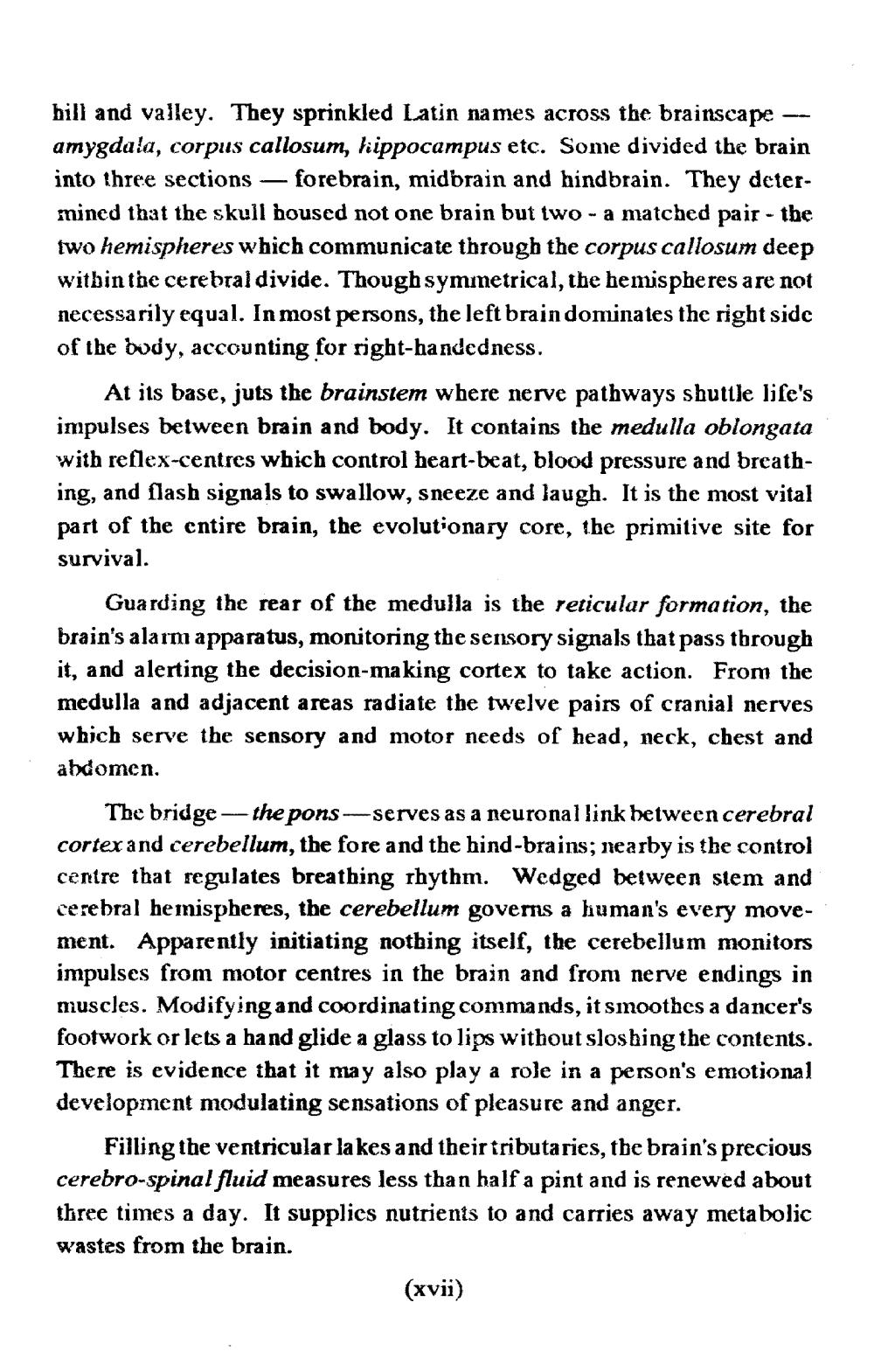________________
hill and valley. They sprinkled Latin names across the brainscape -- amygdala, corpus callosum, hippocampus etc. Some divided the brain into three sections — forebrain, midbrain and hindbrain. They determined that the skull housed not one brain but two - a matched pair - the two hemispheres which communicate through the corpus callosum deep within the cerebral divide. Though symmetrical, the hemispheres are not necessarily equal. In most persons, the left brain dominates the right side of the body, accounting for right-handedness.
At its base, juts the brainstem where nerve pathways shuttle life's impulses between brain and body. It contains the medulla oblongata with reflex-centres which control heart-beat, blood pressure and breathing, and flash signals to swallow, sneeze and laugh. It is the most vital part of the entire brain, the evolutionary core, the primitive site for survival.
Guarding the rear of the medulla is the reticular formation, the brain's alarm apparatus, monitoring the sensory signals that pass through it, and alerting the decision-making cortex to take action. From the medulla and adjacent areas radiate the twelve pairs of cranial nerves which serve the sensory and motor needs of head, neck, chest and abdomen.
The bridge --- the pons-serves as a neuronal link between cerebral corter and cerebellum, the fore and the hind-brains; nearby is the control centre that regulates breathing rhythm. Wedged between stem and cerebral hemispheres, the cerebellum governs a human's every movement. Apparently initiating nothing itself, the cerebellum monitors impulses from motor centres in the brain and from nerve endings in muscles. Modifying and coordinating commands, it smoothes a dancer's footwork or lets a hand glide a glass to lips without sloshing the contents. There is evidence that it may also play a role in a person's emotional development modulating sensations of pleasure and anger.
Filling the ventricular lakes and their tributaries, the brain's precious cerebro-spinal fluid measures less than half a pint and is renewed about three times a day. It supplies nutrients to and carries away metabolic wastes from the brain.
(xvii)




